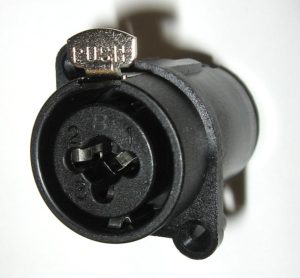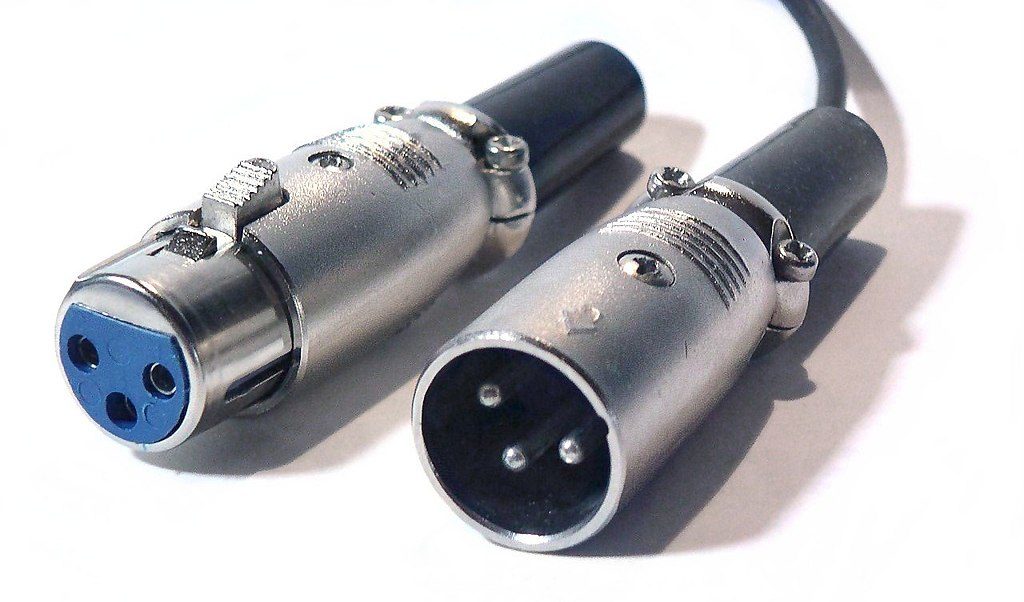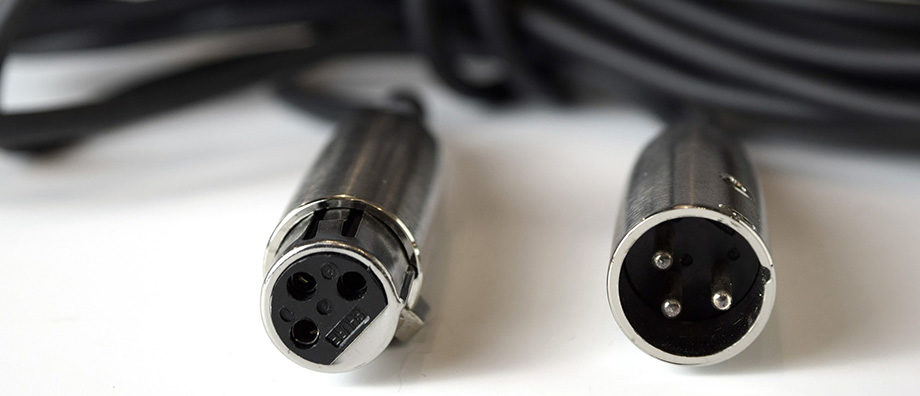What is an XLR connector?
XLR is a professional grade connector mostly used in balanced audio cables and microphones. The XLR standard consists of a male and female three-pronged plug shielded in a round metal tube. XLR inputs and outputs are found on a variety of professional quality gear such as pro video cameras, shotgun microphones, and more. Four-, five-, six- and seven-pin XLR cables also exist but they are less common and used for equipment such as fog machines, intercom systems, and theatrical lighting controls.
In this article, we’ll look at a few examples of equipment with XLR audio connectors and we’ll also talk about the pros and cons of using this audio connector type. Finally, we’ll provide some links to help you choose the best equipment for your purposes.
Examples of XLR cable connectors
Here are some examples of several types of equipment you might encounter that uses XLR connectors.
• Here’s an example of a standard XLR audio cable. This particular one measures 6 feet long but XLR cables come in all sorts of lengths.
• The Sony HXR-NX100 HD NXCAM Camcorder is an example of a professional video camera with 2 XLR inputs. In the case of this camera, the dual XLR inputs are housed in a box on the front of the top handle. TwoFor instance, two XLR cables can be plugged into the HXR-NX100, which can lead to a shotgun microphone and an XLR lavalier microphone. Not every video camera has XLR inputs, so XLR adapters for DSLRs and camcorders exist to bridge that gap and allow you to use XLR shotgun microphones for instance with these cameras.
• The Shure SM58 microphone is a well known handheld microphone with an XLR connector at its base. To connect this microphone to a camera, you’ll need to use an XLR cable in the middle, for instance, like the 6 foot XLR cable we linked to earlier in this article.
• Here’s a sound mixing board that has six XLR audio inputs and two XLR audio outputs for speakers, in addition to several other audio inputs. A sound mixer like this might be useful if you need to patch together six different XLR microphones, each from a different person, for a live event, with the sound going to a set of speakers (such as a discussion panel on a stage where everyone has a microphone, for instance).
Pros & Cons of using XLR audio connectors
If you need to decide whether or not to use gear with XLR connectors or not, here are some factors to consider in making your decision.
Space/weight: Gear with XLR connectors tends to be heavier and bulkier, in part because of the metal connectors that are used and partially because the cables tend to be heavy duty. This is because they’re designed for professional use and therefore it might be either a pro or a con depending on what your needs are.

Size: A normal 3.5mm headphone jack (1/8th inch) is quite a bit smaller than an XLR connector and consequently the gear features full-sized XLR connectors tends to be larger. There isn’t room on a DSLR for full sized audio inputs. Depending on what’s important to you, you might have to make your choice based on the size of the gear.
Balanced vs unbalanced audio: For longer cables, the issue of balanced vs unbalanced audio becomes important to prevent signal interference and audio errors. XLR cables are balanced whereas many other types of cables are not.
Understanding male vs female XLR

Which side of an XLR cable or connector or port is male or female? In the photo above, the female XLR connector is shown on the left in blue, and the male XLR connector is shown on the right. The side with the pins is the male side of an XLR connector. XLR ports on equipment like cameras are generally female XLR ports because you’re plugging things like cables that lead to microphones into them.
It is sometimes also possible to reverse the direction of an XLR cable to plug in combinations of equipment that would not normally connect together. To do this you may need additional equipment like an XLR barrel adapter like a male to female XLR adapter, or a female to female XLR adapter, or male to male XLR adapter.
Browse more XLR adapters, gear & accessories
Here are an assortment of articles about other gear that uses XLR audio connectors.
The Ultimate Guide to Lavalier Microphones & Lapel Mics
XLR to RCA Audio Adapter Cables & Converters
XLR to 1/4th Inch TRS Adapters & Patch Cables
What are the Best DSLR XLR Audio Adapters?
5 Best XLR to USB Adapters, Converters & Preamps
Best XLR Shotgun Microphones and Boom Mics for Filmmakers




